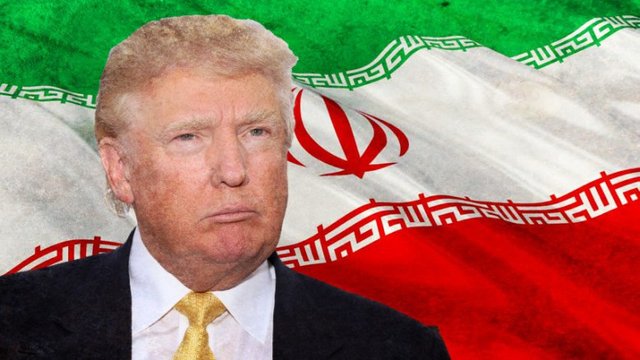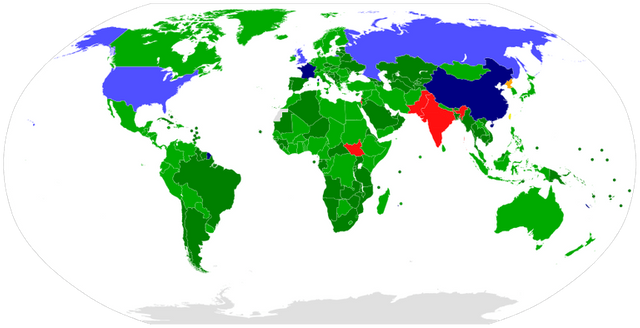Is the “Iran Deal” Actually Bad Policy?

Republished from New Media Central - http://newmediacentral.net/is-the-iran-deal-actually-bad-policy/
Pundits, Journalists, and Politicians Are Missing the Ball
From the moment Barack Obama began talks of a nuclear deal with Iran virtually every right-wing commentator blasted the President as foolish, naive, and weak. It wasn’t the first time they’d called him that, and admittedly, I too bought into the notion that any deal with Iran, repeatedly called the world’s largest state sponsor of terrorism, was a bad deal.
I must also admit that I hadn’t actually read the deal, nor had I done much research on it. What I knew, and what most Americans knew, about the agreement was that it “enabled Iran to obtain nuclear weapons and continue their pursuit of a nuclear program”. It wasn’t until I began questioning those right-wing pundits that I was able to see through their lies and misleading commentary. One thing we should all do is question everybody and everything.
Is Iran Actually a Threat to Israel or the United States?
Let’s go back in history and try to grasp where this deal came from. Iran had been under intense sanctions for some time due to their pursuit of nuclear technology. Israel, America’s little brother in the middle east, warned that without these sanctions Iran would have developed a nuke sooner, and had promised to “wipe Israel off the face of the Earth.”
A lot of the hoopla for Iran being a threat to Israel comes from the statements of former Iranian President Mahmoud Ahmadinejad. George W Bush and everyone else in Washington condemned the language, but as facts would have it – the statement wasn’t actually said. In 2011, Glenn Kessler wrote for the Washington Post,
“The firestorm started when Nazila Fathi, then the Tehran correspondent of The New York Times, reported a story almost six years ago that was headlined: “Wipe Israel ‘off the map’ Iranian says.” The article attributed newly elected Iranian President Mahmoud Ahmadinejad’s remarks to a report by the ISNA press agency.
The article sparked outrage around the globe, with then-President George W. Bush and other world leaders condemning Ahmadinejad’s statement. The original New York Times article noted that Ahmadinejad said he was quoting Ayatollah Ruhollah Khomeini, the leader of the Islamic revolution, but that aspect was largely overlooked.
Then, specialists such as Juan Cole of the University of Michigan and Arash Norouzi of the Mossadegh Project pointed out that the original statement in Persian did not say that Israel should be wiped from the map, but instead that it would collapse.”
The truth about what was said when translated correctly and put into context was swept under the rug. Videos and images of Iranians marching the streets burning American flags were shown to scare Americans into believing that a country with a military budget of around $10 billion could somehow pose a threat to the United States, which has a military budget of well over $500 billion. Could it be that these people were protesting due to the sanctions that America placed on their country?
Interestingly, Iran is a country surrounded by other nuclear powers – Israel, Pakistan, and India. These three countries are among the five in the entire world who are not a part of the non-proliferation treaty. Iran, for its part signed the non-proliferation treaty. Israel did not. Pakistan did not. India did not.

What is in this “Awful Deal” That Obama and Iran Agreed To?
This is something that isn’t really actually discussed. We all know that the deal is terrible, but yet we don’t know what’s actually in it; at least most of us don’t. (That includes journalists, TV personalities, authors, and radio hosts.) You’d think that after Nancy Pelosi famously said “we have to pass it so you can find out what’s in it”, people would think to read something before they repeal it. Oh well.
The Iran Deal consisted of five major parts:
Iran must give up 97% of its uranium, the main ingredient necessary for nuclear weapons. Prior to the deal, Iran had a stockpile of 10,000kg of uranium, and is now around 300kg, less than what is needed for even a single nuclear weapon.
Iran can no longer produce highly enriched uranium. Uranium comes in different “purity” levels. 90% enriched uranium is what is needed for a weapon. Iran is only allowed to produce 3.67% enriched uranium.
Iran must reduce its number of centrifuges, which are used to enrich uranium, by two thirds. Roughly 19,000 centrifuges must be reduced to around 5,000.
Iran agreed to regular inspections of its military bases and nuclear development facilities. The IAEA (International Atomic Energy Agency) has conducted 8 inspections so far, and Iran has continually held up its end of the deal.
The United States, the European Union, and the United Nations all agree to sanctions relief, freeing up around $150 billion in resources.
The concern comes from the fact that the deal only lasts around 15 years, meaning in time, Iran will be free from the current deal and be able to develop nuclear weapons. New deals and agreements are met between countries all of the time, and there’s no reason to believe that Iran wouldn’t agree to another deal in the future, especially if America decides to reimpose sanctions at that time.
Because major sanctions have been lifted, this could also mean that the extra $150 billion, previously in frozen assets, could be used to fund terrorism around the region. Also, some argue that if Iran pursues nuclear weapons further, it could trigger an arms race, throwing the region into even more chaos.
Has Iran Violated the Deal? What Do the Experts Say?
Surprisingly, Iran has actually held up its end of the bargain. IAEA reports are readily available, with the most recent one from August 2017. Sadly, almost no one reads these official reports which state clearly that Iran is NOT pursuing the technology required for a weapons program, and is by-and-large using its program for energy, NOT bombs.
From the August IAEA report on Iran,
“Iran has not pursued the construction of the Arak heavy water research reactor (IR-40 Reactor) based on its original design.9,10 Iran has not produced or tested natural uranium pellets, fuel pins or fuel assemblies specifically designed for the support of the IR-40 Reactor as originally designed, and all existing natural uranium pellets and fuel assemblies have remained in storage under continuous Agency monitoring (paras 3 and 10).11”
Iran signed the deal, has abided by it, signed the non-proliferation treaty, and allows regular inspections of its facilities.
Why Do Top United States Politicians Hate This Deal?
This is a question that requires a LOT of explaining, and it’s very hard to do without an entire book, or perhaps, an encyclopedia, on U.S. – Middle East relations. Sometimes the U.S. finds itself pulled into fights by its friends. It is not so much that Iran is a threat to the U.S., but that Iran is a threat to the middle east being dominated by Saudi Arabia and Israel, two countries with longstanding grievances with Iran.
Some of the Saudi-Iran conflicts have to do with different sects of Islam, others have to do with battles over who controls which patch of sand. It is clear that the two don’t get along, so Saudi Arabia calls up its friends in the West, namely the United States, and insists we once again impose sanctions. Remember who the number one buyer of U.S. weapons is – Saudi Arabia.
24/7 Wall Street reported that the Saudis have been increasing the number of weapons bought from the U.S. in recent years.
“Saudi Arabia’s spending on American arms and weapons systems has increased dramatically in recent years. The oil-rich Middle Eastern country never spent more than $607 million on arms from the United States between 2006 and 2013. Since then, however, spending shot up to well over $1 billion in 2014 and reached $1.9 billion in 2016, the largest amount yet.”
What keeps America’s fake economy going is the warfare state – the buying and selling of guns, bombs, planes, and tanks. This might be why the “Stop Arming Terrorists Act” wasn’t supported by almost anyone in Washington. Some Americans see a problem with sending weapons around the world to suspicious buyers, but it isn’t a problem for those in Washington, who receive big campaign contributions from companies like Boeing and Lockheed Martin.
Mint Press News reported that only 2% of legislators supported the bill.
“The Stop Arming Terrorists Act is so unique that it’s also the only bill of its kind that would also bar the government from funneling money and weapons through other countries that support (directly or indirectly) terrorists such as Saudi Arabia.
To our surprise — or should we say shame? — only 13 other lawmakers out of hundreds have co-sponsored Gabbard’s House bill. Paul’s Senate version of the bill, on the other hand, has zero cosponsors.”
Killing the Iran Deal Has Nothing to do with American Security
It should be pretty clear that most of U.S. foreign policy has little to do with “keeping us safe”. The Department of Defense ought to properly be named the “Department of Offense”. The military industrial complex, oil moguls, and international corporations have a vested interest in maintaining their control over the middle east, which means putting their boots on the head of Iran.
Politicians from both parties are bought off to maintain the status quo – a world where war is money. Sadly, too many Americans don’t see the reality of what is going on. American troops are being put in harm’s way to maintain the control that world elites have on certain parts of the globe. Donald Trump is mistaken in believing that Iran is a threat to the United States. However, if he were to rephrase that – calling it a “threat to our interests”, maybe then he’d at least be honest.